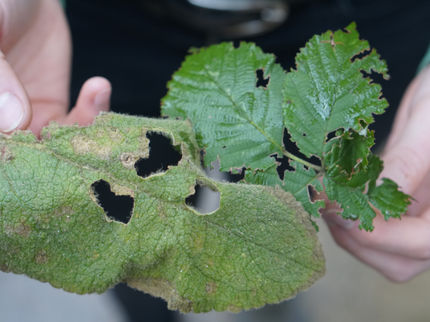Plant fertility - how hormones get around
Researchers at Tokyo Institute of Technology have identified a transporter protein at the heart of a number of plant processes associated with fertility and possibly aging.
Very low quantities of hormones instigate a number of the plant processes needed for survival, growth and proliferation - all significant factors affecting crop yield. However getting the right hormones to the right place is crucial. Recent studies have identified a number of hormone-transporting proteins that import and export hormones across the plasma membrane into and out of cell, helping to understand certain key processes. Now researchers at Tokyo Institute of Technology, Tohoku University and the RIKEN Center for Sustainable Resource Science have identified a protein that is core to a number of the processes that control fertility in the small mustard-like plant, Arabidopsis.
Hiroyuki Ohta and his team used gene network analysis to highlight genes that respond to jasmonic acid (JA) – a type of hormone associated with fertility, aging and defence responses for which so far no transporter protein has been identified. They noticed tight co-expression between the gene encoding GTR1/NPF2.10 protein and JA biosynthesis genes. Further studies showed that treatment with JA increased GTR1 expression in seedlings confirming the link. Hormone and stamen development was affected in plants with GTR1 associated mutations and their leaves seemed to turn brown and age in the presence of JA, suggesting GTR1 affects JA sensitivity.
Further studies suggested that GTR1 plays a key role in the transport of another hormone gibberellin (GA), because GA treatment fully complemented the defect of gtr1 in stamen development and fertility. While former research had established that JA and GA were both key to plant fertility and that there may be crosstalk between the two, the function of interplay had not been well established. Treating JA-deficient mutants with GA led to swollen fruit but no mature seeds. “These results indicated that JA signalling is required for stamen development and is independent of the stimulation of GA signalling, even though GA could partially compensate for a lack of JA function during floral development," state the researchers in their report.
The researchers conclude that GTR1/NPF2.10 is a multifunctional transporter for a bioactive form of JA, GA and glucosinolates – a class of organic compound derived from glucose and amino acid. The results also suggest that GTR1/NPF2.10 plays an important role in stamen development and fertility and may also be important for hormone transport in vegetative tissue.
Original publication
Original publication
H. Saito, T. Oikawa, S. Hamamoto, Y. Ishimaru, M. Kanamori-Sato, Y. Sasaki-Sekimoto, T. Utsumi, J. Chen, Y. Kanno, S. Masuda, et al.; “The jasmonate-responsive GTR1 transporter is required for gibberellin-mediated stamen development in Arabidopsis”; Nature Communications.
Organizations
Other news from the department science

Get the life science industry in your inbox
By submitting this form you agree that LUMITOS AG will send you the newsletter(s) selected above by email. Your data will not be passed on to third parties. Your data will be stored and processed in accordance with our data protection regulations. LUMITOS may contact you by email for the purpose of advertising or market and opinion surveys. You can revoke your consent at any time without giving reasons to LUMITOS AG, Ernst-Augustin-Str. 2, 12489 Berlin, Germany or by e-mail at revoke@lumitos.com with effect for the future. In addition, each email contains a link to unsubscribe from the corresponding newsletter.


















































